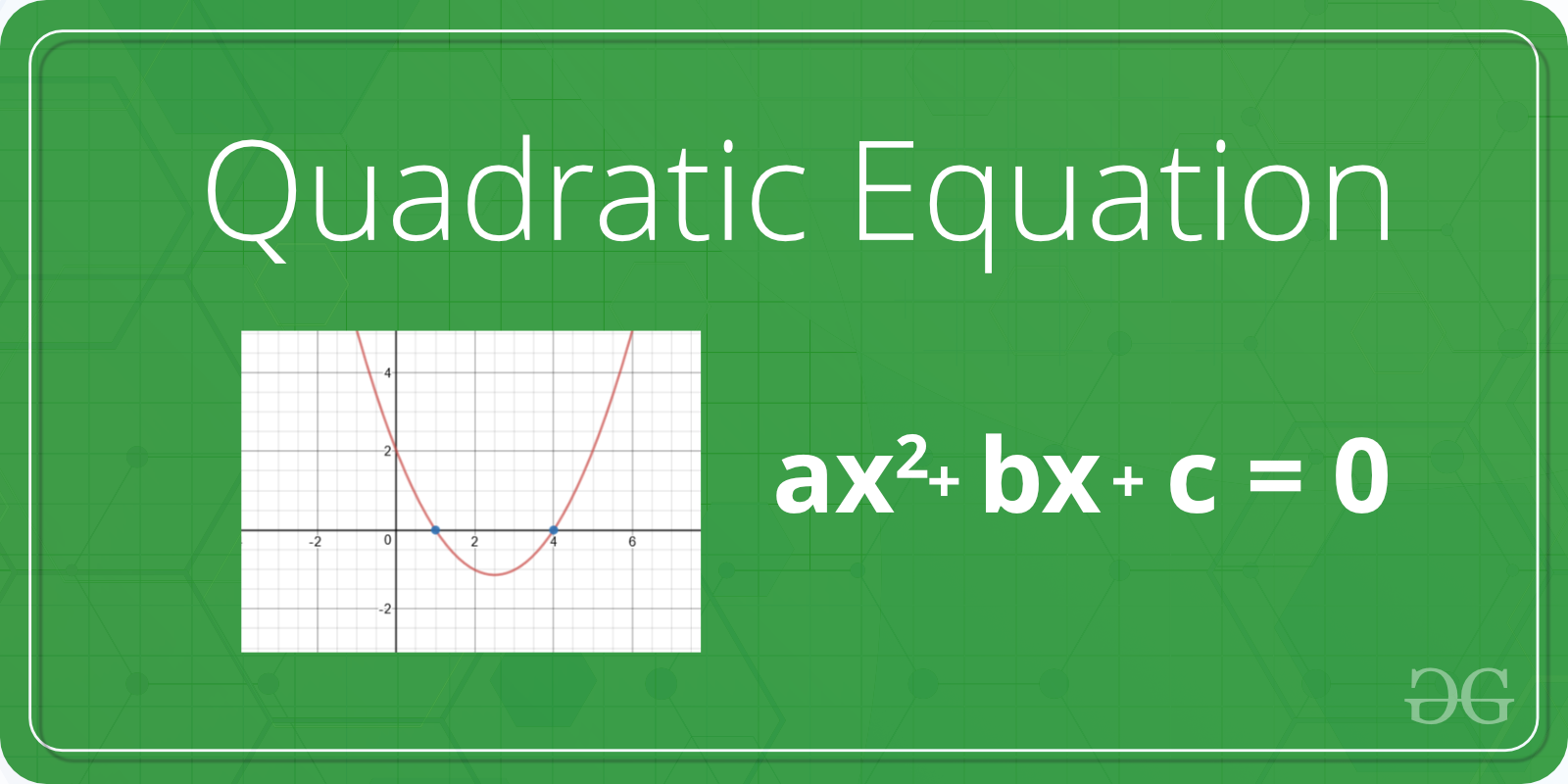Python程序求解二次方程
给定一个二次方程,任务是求解方程或找出方程的根。二次方程的标准形式是——
ax2 + bx + c
where,
a, b, and c are coefficient and real numbers and also a ≠ 0.
If a is equal to 0 that equation is not valid quadratic equation.

例子:
Input :a = 1, b = 2, c = 1
Output :
Roots are real and same
-1.0
Input :a = 2, b = 2, c = 1
Output :
Roots are complex
-0.5 + i 2.0
-0.5 - i 2.0
Input :a = 1, b = 10, c = -24
Output :
Roots are real and different
2.0
-12.0
方法一:使用直接公式
使用下面的二次公式,我们可以找到二次方程的根。
![]()
有以下重要案例。
If b*b < 4*a*c, then roots are complex
(not real).
For example roots of x2 + x + 1, roots are
-0.5 + i1.73205 and -0.5 - i1.73205
If b*b == 4*a*c, then roots are real
and both roots are same.
For example, roots of x2 - 2x + 1 are 1 and 1
If b*b > 4*a*c, then roots are real
and different.
For example, roots of x2 - 7x - 12 are 3 and 4# Python program to find roots of quadratic equation
import math
# function for finding roots
def equationroots( a, b, c):
# calculating discriminant using formula
dis = b * b - 4 * a * c
sqrt_val = math.sqrt(abs(dis))
# checking condition for discriminant
if dis > 0:
print(" real and different roots ")
print((-b + sqrt_val)/(2 * a))
print((-b - sqrt_val)/(2 * a))
elif dis == 0:
print(" real and same roots")
print(-b / (2 * a))
# when discriminant is less than 0
else:
print("Complex Roots")
print(- b / (2 * a), " + i", sqrt_val)
print(- b / (2 * a), " - i", sqrt_val)
# Driver Program
a = 1
b = 10
c = -24
# If a is 0, then incorrect equation
if a == 0:
print("Input correct quadratic equation")
else:
equationroots(a, b, c)
输出:
real and different roots
2.0
-12.0
方法 2:使用复数数学模块
首先,我们必须计算判别式,然后使用 cmath 模块找到二次方程的两个解。
# import complex math module
import cmath
a = 1
b = 4
c = 2
# calculating the discriminant
dis = (b**2) - (4 * a*c)
# find two results
ans1 = (-b-cmath.sqrt(dis))/(2 * a)
ans2 = (-b + cmath.sqrt(dis))/(2 * a)
# printing the results
print('The roots are')
print(ans1)
print(ans2)
输出:
The roots are
(-3.414213562373095+0j)
(-0.5857864376269049+0j)